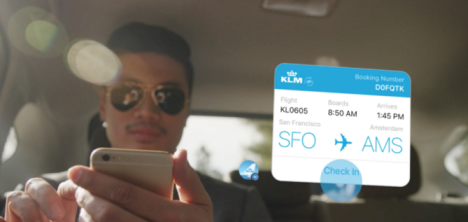What’s with all the chatter about Facebook chatbots?
 Overnight, Facebook announced the launch of bots for Messenger – a service that may just redefine how brands communicate. George Pappas talks us through the opportunities.
Overnight, Facebook announced the launch of bots for Messenger – a service that may just redefine how brands communicate. George Pappas talks us through the opportunities.
Ah, chatbots. We meet again. Chatbots, short for chatter robots or chatter bots, have been discussed, trialled and launched on various online platforms since the internet’s inception.
In fact, computing intelligence was first discussed by Alan Turing in 1950, developing a criterion of intelligence dependant on the ability of a computer or program to impersonate a human in a real-time conversation.
The term ChatterBot, though, was originally coined by Michael Mauldin in 1994.
So, why all the recent chatter surrounding chatbots? Well, Facebook this week announced that it will allow businesses to deliver automated messages through bot-like functionality through its Messenger application.
A persistent search bar will appear at the top of the Messenger interface, allowing users to discover bots. These bots allow users to do more than just engage in a structured text-based conversation, offering brands the ability to include richer content such as images, links and call-to-action buttons in the message thread.
A little spammy, you say? Well, that’s what we thought initially, too. Here we are, as a digital agency, doing our best to personify and humanise brand tonality and in the same breath are spruiking robot intelligence. We realise, though, that this move by Facebook is spurred on by its voracious mission to keep users within its ecosystem – at all times.
 Let’s consider an example. James needs to book a hotel room. James pings the Hyatt via its bot, asking for room availabilities. The bot responds, immediately, with a tailored answer.
Let’s consider an example. James needs to book a hotel room. James pings the Hyatt via its bot, asking for room availabilities. The bot responds, immediately, with a tailored answer.
Some would say this search journey isn’t dissimilar to native search via Hyatt’s website. We don’t disagree with that, but we must understand that from a user’s perspective, the journey via Messenger is much more pleasant and trusted for quick, on-the-go queries.
Beneath the surface, Facebook is desperate to keep users within its ecosystem for as long as possible. Stickiness is becoming an issue for Facebook, as users generally are sharing less content on the platform and doing more external browsing.
Facebook’s embedded internet browser, its publishing tool and many other new initiatives all lend weight toward the argument that Facebook will indeed become complementary to many general daily activities outside of social networking.
Soon, we’ll be booking Ubers and hotel rooms, sending money, browsing the internet, messaging friends and family, making voice calls and more all within the Facebook ecosystem.
Intrinsically, this is an opportunity for brands.
We spoke late last year that the quick rise (and quicker demise) of social network Peach was a huge insight into the state of user behaviour socially and online.
Users have an appetite for command-prompts but Peach was perhaps a little early. Bots and command-prompts alike offer users a new and more accessible channel to interact with brands.
Brands willing to embrace computing intelligence will be the true winners. As silly as it sounds, all we are doing is becoming more human by utilising this technology. We, as brands, are using the Messenger channel (historically used only for user-to-user dialogue) to interact with our audience. Brands become personified on Messenger.
Potentially, bots could redefine how brands communicate, and sell their products and services. Instead of users searching, bots can ask questions that create relevant and tailored results.
It won’t be cheap, either. Facebook will eventually open up ‘Sponsored Messages’ and ‘Click to Message’ news feed ads that prompt conversation with bots.
The one area that does concern us ever so slightly is community management.
Chatterbots unlock the ability to provide tailored, structured responses akin to a human customer service rep (or so they say), but haven’t we learned that technology can’t replace thorough customer service?
On a daily basis we are challenging our clients to move away from template frameworks, auto-responses and mechanical tonality to create a true customer service channel out of social.
Social customer service should actually be solving problems (rather than simply directing users to a customer service line). We truly do hope brands do not see bots as an opportunity to replace or make obsolete their community managers. The need for human-to-human interaction in customer service will never change.
So, in summary… bots are indeed an exciting new addition to the Messenger platform that we should embrace, but we must tread carefully and always appreciate the importance of real human intelligence as opposed to robotic intelligence.
George Pappas is a campaign director at 24/7 digital agency, G Squared.





“Facebook is desperate to keep users within its ecosystem for as long as possible.”
Exactly why so many of choose not to use it.
Join us, friends. Reclaim your privacy. It’s so nice out here away from all the spam, baby photos and fake online personas.
User ID not verified.
Got to say, Jen, I agree. Just the past few weeks I’ve noticed an increase in targeted posts on Facebook and Twitter and I’m wearying of it. Yep, I’m on the verge of quitting it.
User ID not verified.
Sorry Jen, privacy hasn’t existed for decades.
User ID not verified.